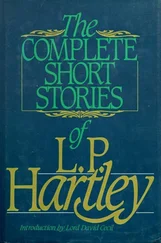Meanwhile an impatient President Quayle, aware that he was the butt of cartoonists and TV comedians, demanded firmer action. He ordered that pop music be played at full blast against the spacecraft’s hull and, further, that the huge ship be rocked violently from side to side until the crew came to their senses. This regime was tried but discontinued after two hours, partly for its sheer ludicrousness, and partly for fear of damaging the nuclear reactors.
More thoughtful opinion was aware that the crisis afflicting the Zeus crew merited careful study in its own right, if mankind were ever to live permanently in space. A prominent theologian was invited to the Edwards airbase, and surveyed the claustrophobic hangar in which the Zeus was now entombed, draped like Gulliver in its cables and acoustic sensors. He wondered why the crew had bothered to return to Earth at all, knowing what they probably faced, when they might have stayed forever on the vast and empty landscapes of Mars. By returning at all, he ventured, they were making an important point, and acknowledged that they still saw their place among the human race.
So a patient vigil began. Concealed cameras watched for any signs of internal movement and electronic gauges mapped the smallest activities of the crew. After a further three months the daily pattern of life within the Zeus IV had been well established. The crew never spoke to each other, except when carrying out the daily maintenance checks of the spacecraft systems. All took regular exercise in the gymnasium, but otherwise stayed in their own quarters. No music was played and they never listened to radio or television. For all that anyone knew, they passed the days in sleep, meditation and prayer. The temperature remained at a steady 68°F., and the only constant sound was that of the circulation of air.
After six months the NASA psychiatrists concluded that the crew of the Zeus IV had suffered a traumatic mental collapse, probably brought on by oxygen starvation, and were now in a vegetative state. Relatives protested, but public interest began to wane. Congress refused to allocate funds for further Zeus missions, and NASA reluctantly committed itself to a future of instrumented spaceflights.
A year passed, and a second. A small guard and communications crew, including a duty psychologist and a clergyman, still maintained a vigil over the Zeus. The monitors recorded the faint movements of the crew, and the patterns of daily life which they had established within a few hours of their landing. A computerized analysis of their foot-treads identified each of the astronauts and revealed that they kept to their own quarters and seldom met, though all took part in the maintenance drills.
So the astronauts languished in their twilight world. A new President and the unfolding decades of peace led the public to forget about the Zeus IV, and its crew, if remembered at all, were assumed to be convalescing at a secret institution. In 2016, eight years after their return, there was a flurry of activity when a deranged security officer lit a large fire under the spacecraft, in an attempt to smoke out the crew. Four years later a Hollywood telepathist claimed to be in contact with the astronauts, reporting that they had met God on Mars and had been sworn to silence about the tragic future in store for the human race.
In 2025 the NASA headquarters in Houston were alerted to a small but sudden fall in the overall weight of the Zeus — 170 pounds had been wiped from the scales. Was the spacecraft preparing for take-off, perhaps employing an anti-gravity device which the crew had been constructing in the seventeen years since their return? However, the tread-pattern analysis confirmed that only four astronauts were now aboard the craft. Colonel Irwin was missing, and an exhaustive hunt began of the Edwards airbase. But the organic sediments in the trapped gases released from a discharge vent revealed what some engineers had already suspected. Colonel Irwin had died at the age of 62, and his remains had been vapourized and returned to the atmosphere. Four years later he was followed by the Japanese, Professor Kawahito, and the Zeus was lighter by a further 132 pounds. The food stocks aboard the Zeus would now last well beyond the deaths of the three astronauts still alive.
In 2035 NASA was dissolved, and its functions assigned to the immensely wealthy universities which ran their own scientific space programmes. The Zeus IV was offered to the Smithsonian Institute in Washington, but the director declined, on the grounds that the museum could not accept exhibits that contained living organisms. The USAF had long wished to close the Edwards airbase, and responsibility for this huge desert expanse passed to the National Parks Bureau, which was eager to oversee one of the few areas of California not yet covered with tract housing. The armed guards around the Zeus IV had long gone, and two field officers supervised the elderly instruments that still kept watch over the spacecraft.
Captain Homer died in 2040, but the event was not noticed until the following year when a bored repairman catalogued the accumulated acoustic tapes and ran a computer analysis of tread-patterns and overall weight.
The news of this death, mentioned only in the National Parks Bureau’s annual report, came to the attention of a Las Vegas entrepreneur who had opened the former Nevada atomic proving grounds to the tourist trade, mounting simulated A-bomb explosions. He leased the Zeus hangar from the Parks Bureau, and small parties of tourists trooped around the spacecraft, watching bemused as the rare tread-patterns crossed the sonar screens in the monitor room.
After three years of poor attendances the tours were discontinued, but a decade later a Tijuana circus proprietor sub-leased the site for his winter season. He demolished the now derelict hangar and constructed an inflatable astro-dome with a huge arena floor. Helium-filled latex ‘spacecraft’ circled the Zeus IV, and the performance ended with a mass ascent of the huge vehicle by a team of topless women acrobats.
When the dome was removed the Zeus IV sat under the stars, attached to a small shack where a single technician of the Parks Bureau kept a desultory watch on the computer screens for an hour each day. The spaceship was now covered with graffiti and obscene slogans, and the initials of thousands of long-vanished tourists. With its undercarriage embedded in the desert sand, it resembled a steam locomotive of the 19th century, which many passers-by assumed it to be.
Tramps and hippies sheltered under its fins, and at one time the craft was incorporated into a small shanty village. In later years a desert preacher attracted a modest following, claiming that the Messiah had made his second coming and was trapped inside the Zeus. Another cultist claimed that the devil had taken up residence in the ancient structure. The tract housing drew ever closer, and eventually surrounded the Zeus, which briefly served as an illuminated landmark advertising an unsuccessful fast-food franchise.
In 2070, sixty-two years after its return from Mars, a young graduate student at Reno University erected a steel frame around the Zeus and attached a set of high-intensity magnetic probes to its hull. The computerized imaging equipment — later confiscated by the US Government — revealed the silent and eerie interior of the spacecraft, its empty flight decks and corridors.
An aged couple, Commander John Merritt and Dr Valentina Tsarev, now in their late eighties, sat in their small cabins, hands folded on their laps. There were no books or ornaments beside their simple beds. Despite their extreme age they were clearly alert, tidy and reasonably well nourished. Most mysteriously, across their eyes moved the continuous play of a keen and amused intelligence.
Читать дальше
Конец ознакомительного отрывка
Купить книгу












